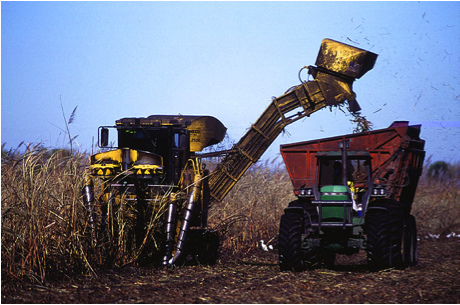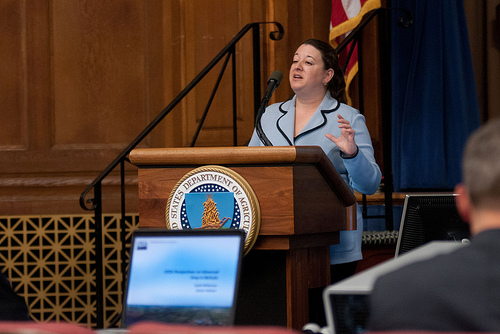This post is part of the Science Tuesday feature series on the USDA blog. Check back each week as we showcase stories and news from the USDA’s rich science and research portfolio.
Hawaii, most people would agree, is pretty close to being paradise – and the same things that make Hawaii a great place for a vacation also make it a great place to grow things. The natural capacity of land to produce crops depends on the amount and distribution of sunlight, temperature, and precipitation. Hawaii has a greater natural production capacity than anywhere else in the U.S. At one time, sugarcane was planted on over 100,000 acres of Hawaii farmland, and there were nine major sugar producers in the state. Now there is only one producer, and the sugarcane acreage has shrunk to 37,000.
One way to revive the sugar industry in Hawaii is to diversify its products so that Hawaiians earn more per acre, and have their own sustainable supply of energy. The USDA has partnered with the University of Hawaii and the Hawaiian Commercial & Sugar Company (the “last man standing” in Hawaii’s sugarcane industry) to develop new ways to grow and use sugarcane as a source of biomass (the organic material used to create biofuels).
In Hawaii, sugarcane has the greatest near-term potential as a biomass feedstock for producing biofuels—it’s perennial and non-invasive, it’s already been grown in Hawaii for over a hundred years, and there is room to improve the existing yields by using newer varieties and harvesting other parts of the plant. Sugarcane yields more energy per acre than other existing crops– it produces both cellulosic biomass (that can be converted into sugars) as well as the sugar itself.
In January, the Secretaries of Agriculture and the Navy got together and signed an agreement to work together on developing new biofuels and renewable energy sources. Why is the Navy interested? The Navy has also been looking into ways to “green” its large fleet of ships stationed in Hawaii, and it costs $10.6 million per year (at a price per gallon of $2.81) to keep one fueled and ready to move. Right now all of that fuel has to be imported, too.
It has a 270-megawatt geothermal power plant in California, a wind farm at Guantanamo Bay, Cuba, and solar photovoltaic panels at its facilities in San Diego. Using biofuels in its fleet is a logical next step. The USDA, the Department of the Navy, the University of Hawaii, and the Hawaiian Commercial & Sugar are now working together on this project.
 Harvesting sugarcane in south Florida, where scientists in the ARS Sugarcane Production Research Unit are identifying research to help sustain both agriculture and natural Everglades ecosystems.
Harvesting sugarcane in south Florida, where scientists in the ARS Sugarcane Production Research Unit are identifying research to help sustain both agriculture and natural Everglades ecosystems. 
An experimental ARS sugarcane field near Canal Point, Florida.

Bar-coded tags identify experimental varieties of sugarcane.
- Ellen Buckley, Program Analyst, Natural Resources and Sustainable Agricultural Systems, USDA Agricultural Research Service






